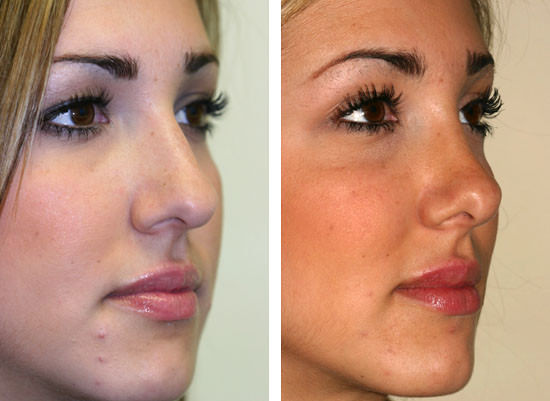
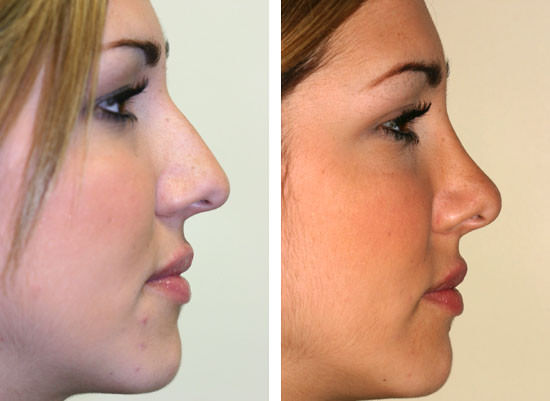
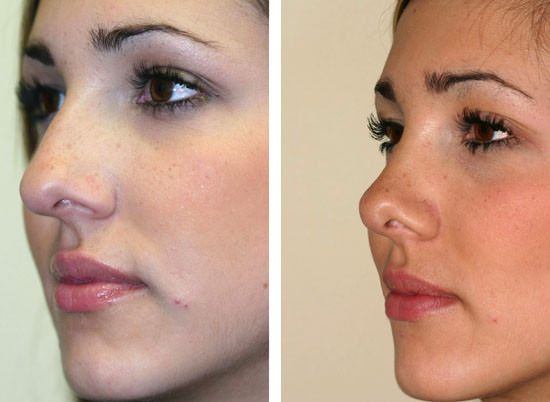

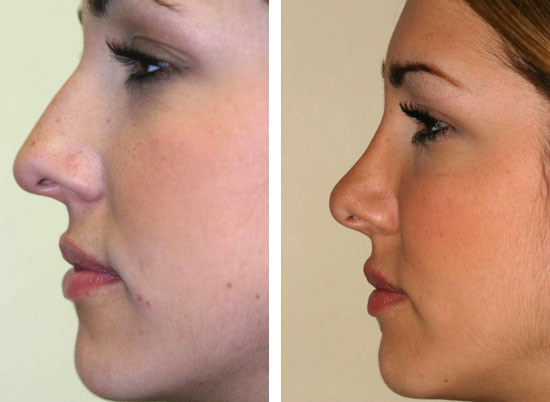
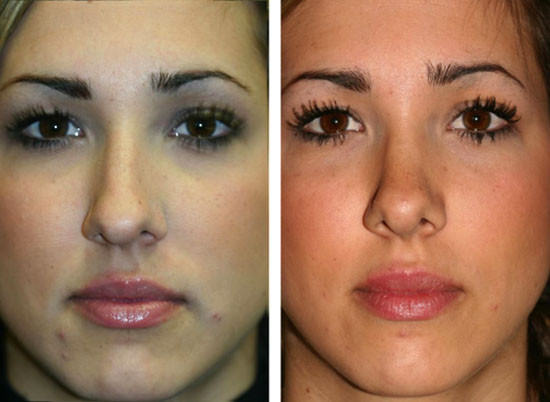
Rhinoplasty 9
The patient is a 27 year old who thought her nose was too prominent and wished a “nose job”. She felt that her tip drooped a little and that the bump on the bridge of her nose was prominent and was sharp looking and that didn’t go with the rest of her face which had a lot of round elements. She also noted that she had what seemed like a hook to the tip of her nose and she wanted to correct that.
Rhinoplasty Plan
The plan included reducing all of the parts of the nose so the nose was not only smaller but all of the parts harmonized and the nose matched the face. The “bump” would be reduced so that as one follows the bridge of the nose down towards the tip on side view, the tip would project past the upper part to create beauty for the tip and refinement. The tip would also be rotated upwards slightly to shorten the nose and to correct what the patient thought was a hooked appearance to the tip. Finally, the width of the upper part of the nose would be reduced so that it matched the bridge.
“Nose Job” Results
The patient was very happy with the results of her rhinoplasty and noted postoperatively, that her nasal tip was refined, less obtrusive and that her nose was balanced within itself and went with the rest of her face. She also said that she could see the other nice features of her face like her eyes and lips now that she wasn’t so focused on her nose that had dominated her facial features prior to surgery.
A Word on Nasal Length and Tip Projection
There are two commonly used terms that relate to the nose: length and projection. The length of the nose is the distance from the inner edge of the eyebrow down to the tip. This patient had an average vertical length of her face but a longer nose than fit the face’s vertical height. During rhinoplasty, the length of the nose can be reduced to fit the height of the face.
Tip projection is the distance the tip sticks out from the cheek on side view. Patients have differing amounts of projection to their nose and most patients who come for a rhinoplasty have too much projection. During their procedure, the nasal tip can be set back to reduce the projection so as to make the tip appear smaller and to harmonize with the rest of the nasal features. The tip can be set back while at the same time preserving other nice features of the tip such as tip rotation and definition of the tip or those features can be modified while the projection is changed. In this patient, the tip was refined and recessed but tip rotation was kept to a minimal.
